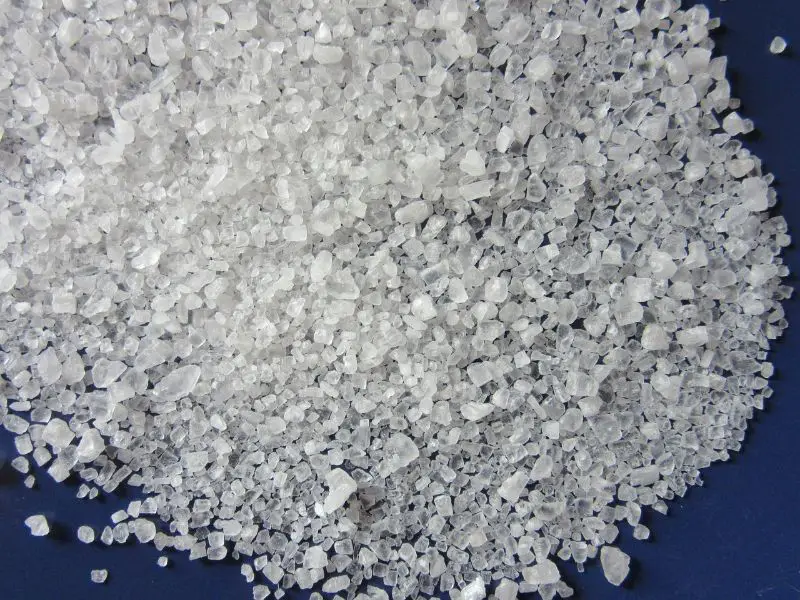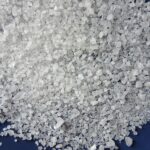
If you’ve ever watched a powerlifting competition or any heavy-lifting event, you may have noticed athletes sniffing something before they lift. What are they sniffing? In many cases, it’s smelling salts or ammonia inhalants.
But why do bodybuilders use these products, and how do they work? This article explores the science behind smelling salts and ammonia inhalants, their benefits and risks, and everything you need to know about them.
Table of Contents (click to expand)
The History of Smelling Salts and Ammonia Inhalants
Believe it or not, the use of smelling salts and ammonia inhalants dates back to the Victorian era. Back then, women would use smelling salts to help them recover from fainting spells.
The idea was that the pungent odor of the salts would stimulate the nasal mucous membranes and trigger a reflex inhalation response, which would, in turn, increase blood flow and oxygen to the brain.
Over time, athletes started smelling salts for a similar reason – to help them recover from feeling lightheaded or from giving them an extra energy boost before a big lift.
Ammonia inhalants, on the other hand, are a newer development. They contain ammonium carbonate, converted into ammonia gas when the capsule is crushed.
This gas irritates the nasal mucosa and triggers an inhalation reflex, which can increase breathing rate and heart rate and improve performance.
How Smelling Salts and Ammonia Inhalants Work
So how do these substances work in the body? When you sniff a smelling salt or an ammonia inhalant, the pungent odor stimulates your nasal mucous membranes, which triggers an inhalation reflex.
This reflex causes you to breathe faster and deeper, which can increase your heart rate and blood pressure. It also causes a “fight or flight” response, which releases adrenaline and other hormones that can increase your energy and mental focus.
In addition, the strong odor of smelling salts and ammonia inhalants can help to clear your sinuses and improve your breathing. This is particularly helpful during heavy lifting when you need more oxygen quickly.
The Benefits of Using Smelling Salts and Ammonia Inhalants
There are several benefits to using smelling salts and ammonia inhalants before a heavy lift. First and foremost, they can help to improve your performance by increasing your energy and mental focus. They can also help you to breathe faster and take in more oxygen, which can help you to lift heavier weights.
Many athletes also report that smelling salts or ammonia inhalants can help alleviate body aches and soreness. This is because the increased breathing rate and heart rate can help to flush out lactic acid and other waste products from your muscles.
Finally, many athletes find that smelling salts or ammonia inhalants before a complex lift can help put them in “fight or flight” mode. This psychological effect can help overcome fear or anxiety about lifting heavier weights.
The Risks and Adverse Effects of Using Smelling Salts and Ammonia Inhalants
While there are certainly benefits to using smelling salts and ammonia inhalants, there are also risks and adverse effects to consider.
For one thing, these substances can be very irritating to your nose and lungs. If you use them too often or in too high of a concentration, you could experience nosebleeds, headaches, or even chemical burns.
In addition, using smelling salts and ammonia inhalants can cause your heart rate and blood pressure to increase rapidly. This can be dangerous if you have a pre-existing heart condition or use these substances excessively. It’s also important to note that some athletes have reported feeling lightheaded or dizzy after using these products, which could indicate oxygen deprivation.
Finally, it’s worth noting that using smelling salts and ammonia inhalants is not without legal risk. While they are perfectly legal to use in most cases, some sports organizations have banned them from competition because they are seen as a performance-enhancing substances.
The Different Types of Smelling Salts and Ammonia Inhalants
Several different types of smelling salts and ammonia inhalants are on the market today. Some come in small bottles of liquid, while others are available in dry powder form. Some are made specifically for athletes, while others are marketed to anyone who needs a quick energy boost.
One famous brand of ammonia inhalants is AmmoniaSport. These capsules contain ammonium carbonate and release ammonia gas when they are crushed. They are marketed as a way to “power through” tough workouts and competitions.
Another popular type of smelling salt is Nose Tork. These ammonia-smelling salts come in a small bottle and can be easily carried in a gym bag or pocket. They are marketed to increase focus and mental clarity before a heavy lift.
Liquid Smelling Salts
Liquid-smelling salts are usually sold in small, portable bottles. One such brand is Nose Tork, a potent and long-lasting option known for its intense ammonia level. Being in a liquid form, the ammonia gas is released when the bottle is opened, and the fumes are inhaled. Due to its intense concentration, only a tiny sniff is usually needed, making it a lasting choice for users. Powerlifters use it predominantly to increase focus and mental clarity before a heavy lift.
Dry Smelling Salts
Dry-smelling salts typically come as powder or solid granules. Depending on the product, they can be activated by shaking, crushing, and inhaling. One famous brand in this category is AmmoniaSport. These ammonia inhalants come as capsules containing ammonium carbonate. When crushed, the capsules release ammonia gas, providing a quick and powerful boost of alertness to help “power through” challenging workouts and competitions.
Pre-Made Inhalants
Some brands offer pre-made ammonia inhalants, often in small ampoules that can be broken or snapped to release the ammonia gas. These are convenient, portable, and provide a potent hit of ammonia for those needing an instant energy jolt.
Customizable Options
Certain brands offer more customizable options, allowing users to control the potency of the inhalants. These typically include a container and separately packaged ammonia and other substances, letting users mix their smelling salts to a desired strength.
General Use Versus Athletic Use
While some smelling salts are marketed specifically towards athletes, others are designed for general use by anyone needing a quick energy boost or revival from a faint. For instance, medical-grade smelling salts are often used in first-aid kits to revive fainted people.
How to Use Smelling Salts and Ammonia Inhalants Safely
If you use smelling salts or ammonia inhalants, it’s important to do so safely. Here are some tips for using these substances:
Start with a small amount
If you’ve never used smelling salts or ammonia inhalants, start with a small amount to see how your body reacts. If you feel comfortable, you can always work up to a higher concentration later.
Use them sparingly
It’s generally not a good idea to rely on smelling salts or ammonia inhalants every time you lift weights. Using them too often can lead to adverse effects and negate any benefits they might have.
Use them as intended
Be sure to follow the instructions on the product label carefully. Please don’t use more than the recommended amount, and don’t use them for purposes other than what they are intended for.
Be aware of the risks
While smelling salts and ammonia inhalants are generally safe when used as directed, there are risks and adverse effects to consider. Be sure to educate yourself on these risks before using these substances.
Alternatives to Smelling Salts and Ammonia Inhalants
Other options are available if you want to boost your performance and mental focus during heavy lifting but are uncomfortable using smelling salts or ammonia inhalants. Here are some natural alternatives to consider:
- Caffeine: Caffeine is a natural stimulant that can help to increase energy and mental focus. You can get caffeine from coffee, tea, or supplements.
- Nitric oxide supplements: Nitric oxide supplements are designed to increase blood flow and oxygen delivery to your muscles. This can help you to lift heavier weights and improve your endurance.
- Essential oils: Some essential oils, such as peppermint and eucalyptus, can help to clear your sinuses and improve your breathing. You can inhale these oils directly or add them to a diffuser.
- Breathing exercises: One of the simplest ways to improve your breathing and increase your mental focus is to practice breathing exercises. You can try deep breathing, alternate nostril breathing, or other techniques to help you relax and prepare for your lift.
Powerlifters and Ammonia Gas
While smelling salts and ammonia inhalants are commonly used by bodybuilders and other athletes, they are trendy among powerlifters. The use of ammonia gas has become something of a tradition in powerlifting competitions.
During a powerlifting competition, you’ll often see competitors sniffing ammonia capsules before they attempt a heavy lift. The pungent ammonia gas’s strong odor can help stimulate the nervous system and put the athlete in “fight or flight” mode. This can help lift heavier weights and overcome fear or anxiety.
However, it’s worth noting that using ammonia gas can be dangerous if not done properly. Using the right concentration and avoiding inhaling the gas directly is important. Many powerlifters also wear a mask or hold the capsule away from their face to avoid inhaling too much at once.
Frequently Asked Questions
Why Do Weightlifters Sniff Before Lifting?
Many weightlifters sniff a type of stimulant known as smelling salts before lifting. The main component of smelling salts is ammonium carbonate, which triggers an inhalation reflex by irritating the membranes of the nose and lungs when sniffed.
This sudden inhalation reflex leads to a quick rush of oxygen to the brain, resulting in a momentary boost of alertness and focus. This heightened arousal can help weightlifters mentally prepare for and power through heavy lifts.
Are Smelling Salts Safe for Weightlifting?
While smelling salts can briefly boost focus and energy, their safety, particularly with regular use, is somewhat controversial. Overusing smelling salts can lead to nasal irritation, coughing, or lung damage due to the vital ammonia gas they release. Although rare, reports of more severe side effects have been reported, like burns or respiratory distress.
Additionally, the immediate boost provided by smelling salts can sometimes lead to a push beyond safe limits, potentially increasing the risk of injuries. Any use of these stimulants must be done responsibly, under proper supervision, and after considering the potential risks involved.
Are Smelling Salts Illegal?
As of my knowledge cutoff in September 2021, smelling salts are not classified as illegal or banned by major sports organizations, including the World Anti-Doping Agency. However, some individual sports or athletic organizations might have policies regarding their use.
What Do You Inhale Before Lifting Weights?
As mentioned earlier, what weightlifters often inhale before lifting weights are smelling salts. The main component, ammonium carbonate, releases ammonia gas that triggers an inhalation reflex leading to a temporary boost in alertness and focus.
However, it’s essential to note that not all weightlifters use this method, and it’s not a necessary or universally endorsed practice. It’s always best to consult a knowledgeable professional or coach before using performance-enhancing methods or substances.
Final Thoughts
In conclusion, smelling salts and ammonia inhalants can be valuable tools for bodybuilders and other athletes who want to improve their performance and mental focus during heavy lifting. However, it’s essential to use these substances safely and responsibly and be aware of their risks and adverse effects.
If you’re uncomfortable using smelling salts or ammonia inhalants, other options are available to help you improve your strength performance and mental focus. The key is to find what works best for you and your body and always prioritize safety and health.





































